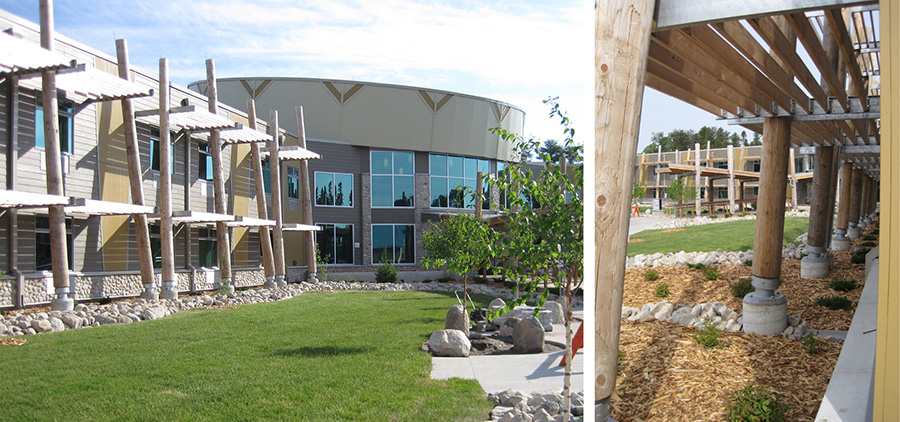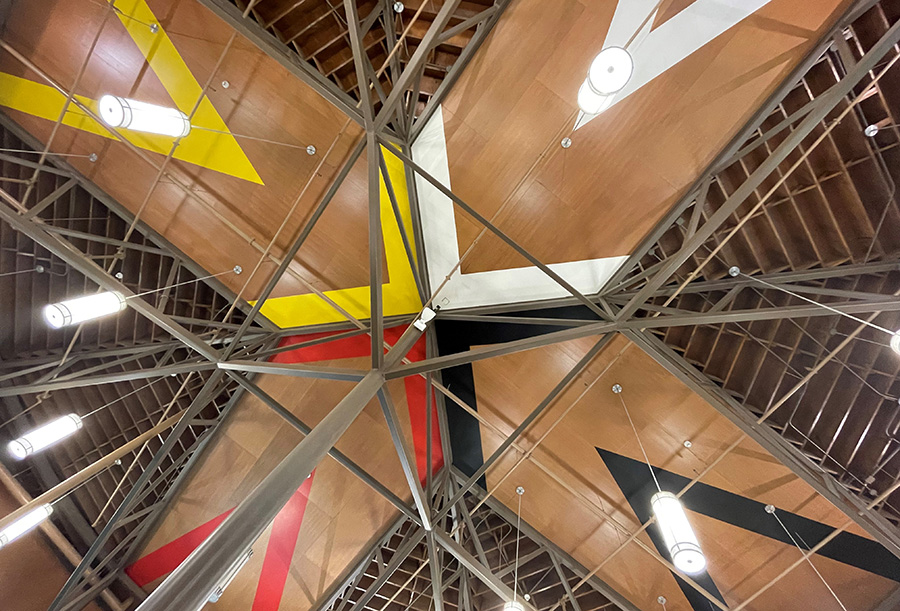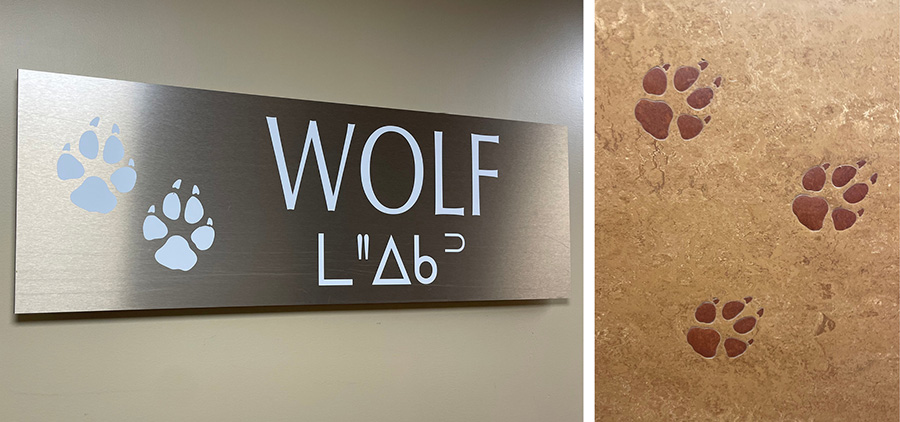Location: Sioux Lookout, Ontario
Date of Completion: 2011
Architect: ft3 Architecture Landscape Interior Design in association with Manasc Isaac Architects (now Reimagine)
Nominated by: Sol Mamakwa, MPP (Kiiwetinoong)
A place to rest and get healthy, the Jeremiah McKay Kabayshewekamik carefully integrates local materials and Indigenous culture to provide a home away from home to members of 33 First Nations seeking services in this northern Ontario healthcare centre.
A First Nations Healthcare Centre
Located in the town of Sioux Lookout, the Jeremiah McKay Kabayshewekamik is a medical hostel forming part of the Sioux Lookout First Nations Health Authority, an organization that coordinates the delivery of essential health care services to 33 First Nations across the region. With a catchment area larger than France, the hostel offers a place for clients to stay during medical visits, playing a critical role in the delivery of healthcare services to these communities.
The facility is named after Jeremiah McKay, a respected member of the Kasabonika Lake First Nation and an instrumental leader for better healthcare in the community. Kabayshewkamik means ‘a place to sleep and rest’ in Anishinaabemowin.
In total, the hostel includes 54 accommodation suites consisting of accessible, single, double, and family arrangements within two two-storey wings. Connecting both dormitory wings is a large, open lobby space–a central hub that houses communal activities including the main reception, group dining, lounge, and a children’s playspace.The large atrium also provides easy sightlines, facilitating wayfinding within the hostel.
 Left: A closer view of the facility. Right: Locally sourced logs support the building’s solar shading. Photos: Courtesy of FT3 Architecture Landscape Interior Design.
Left: A closer view of the facility. Right: Locally sourced logs support the building’s solar shading. Photos: Courtesy of FT3 Architecture Landscape Interior Design.
A Uniquely Local Facility
From the beginning, it was critical that the hostel be reflective of those it would serve. The architects worked with local community members and elders to ensure the building incorporated Indigenous culture and ways of thinking.
On the exterior, the central hub of the facility takes the shape of a hand drum. The beat of the drum is said to harken to the heartbeat of people, animals, and Mother Earth; it is an important part of many First Nations ceremonies, traditions, and cultural practices. The pattern and shape of the Jeremiah McKay Kabayshewekamik’s hand drum was achieved with the guidance of community elders with the architects carefully designing the facade panels to resemble the drum’s skin. Directly under this drum, a ceremonious boardwalk marks the entrance to the facility, audibly announcing the approach of each person as they make their way to the main doors.
 interior of atrium, looking up. Photo: Courtesy of FT3 Architecture Landscape Interior Design.
interior of atrium, looking up. Photo: Courtesy of FT3 Architecture Landscape Interior Design.
In the interior, the drum’s structure is revealed with 13 columns, symbolic of Grandmother Moon and her 13 appearances and teachings, holding up an intricate frame. The interior of the drum has been painted with a medicine wheel—black, red, yellow and white–marking the four cardinal directions. Medicine wheels represent the alignment and continuous interaction of the physical, emotional, mental, and spiritual realities that must all be in balance and equally developed to remain healthy and happy.

wayfinding signs are in latin characters and Canadian syllabic. Right: paw prints aid in navigation. Photo: Courtesy of FT3 Architecture Landscape Interior Design.
Careful attention was also given to material selections and signage to be reflective of the local environment and culture. The facade incorporates locally sourced and milled logs, and the landscape incorporates stone acquired from local quarries as well as a plaque for each of the 33 Nations served by the hostel. Inside, wood and natural materials are prominently featured. Even the building’s wayfinding system is locally inspired, with each guest wing assigned a unique animal name: bear, wolf, eagle, and rabbit. Animal tracks are used as wayfinding cues, introduced on the directory sign that features the names written in both Latin script for English and Canadian syllabic for Anishinaabemowin.
This post forms part of our World Architecture Day Queen’s Park Picks 2022 series in which the OAA asked Ontario’s Members of Provincial Parliament (MPPs) to nominate a prominent building, past or present, in their riding for a chance to learn more about it. Check out the rest of the series to learn more about great buildings across the province!
Additional Resources
Interested in learning more about the Jeremiah McKay Kabayshewekamik and the work of the Sioux Lookout First Nations Health Authority? Check out these additional resources: